Cohab Canyon is a gateway into the unworldly landscape of Capitol Reef National Park
The trailhead is unassuming, but the textures and colors of rock in Cohab Canyon are marvelous.
Immediate switchbacks make for a steep climb up the west-facing cliff, but as you climb you gain views of the small settlement of Fruita and the park below. Settled by Mormons in the early 1900s, Fruita’s population topped out around 100 people in the 1920s. Two waterways — the Fremont River and Sulphur Creek — provided water for ranching and fruit-growing. This allowed the town of Fruita to prosper when many Mormon communities in arid lands to the east failed. Today, in the park’s orchards, you can taste the fruit of the early settlers’ labor. The park service maintains the cherry, apple, pear, and apricot trees as heirloom crops and artifacts of Mormon tenacity and collaboration.
The trail climbs a slope of Chinle Shale for about a half mile before the sculpted walls of Cohab Canyon swallow you. Slip through a notch, a discreet entrance into the hidden canyon. So named for the “cohabs” in southern Utah, Mormon polygamists supposedly took refuge in the canyon when U.S. marshals came looking for them during the federal campaign against polygamy in the 1880s.
Cohab Canyon
Known to long-time Wayne County residents as “Easter Canyon” for their traditional springtime holiday excursion here, Cohab Canyon has banded orange and yellow walls that do in fact resemble pastel-striped eggs. Holes and pockets texture the surface, creating a sandstone honeycomb fortified in rock. In the mile hike through Cohab Canyon, you pass fins of Wingate Sandstone that create slivered slot canyons. A cairned route bypasses a dry waterfall about halfway through, bringing you up onto the slickrock bench on your left before leading you back down to the wash.
A wooden sign points left towards the Fruita Overlook, a short trail that offers more views of the historic Mormon settlement. Continue straight ahead, following the trail across the wash to the right side of the canyon. Follow the trail sign near 1.5 miles and turn right onto the Frying Pan Trail. (If you continue straight ahead, you will exit Cohab Canyon at UT 24.)
Frying Pan Trail
After a level hike through Cohab Canyon, you begin switchbacking up to the top of the Waterpocket Fold. Navajo Sandstone domes fill the horizon, and you can see the angled rock layers that form the Fold, the geologic feature that best characterizes Capitol Reef. Climb to the top of a saddle around 2 miles. From here, the trail meanders across the pillowy mounds of sandstone in between drainages and gullies.
A vast slickrock expanse stretches before you, and the trail heads toward a rock pillar — its red cap rising high above the juniper trees and sagebrush. The hike reaches its highpoint around 3.25 miles.
Continuing through a labyrinth of drainages, follow the trail downslope while watching for patches of delicate cryptobiotic soil. You know you’re nearing the Cassidy Trail junction when you can see the Scenic Drive and Grand Wash Road to your right just a half mile farther. Keep descending the slope, and watch closely for the well-camouflaged cairns that take you along a Navajo Sandstone ledge. From here, you have excellent views of Ferns Nipple, a pointed dome of Navajo Sandstone south of Grand Wash.
Slickwalk to Cassidy Arch
Around 4.3 miles, you reach a trail sign that points towards Cassidy Arch. Look for the cairned route down the sheet of slickrock. Since you approach the arch from behind, you won’t see the feature until you’re practically standing next to it. Arrive at the viewpoint behind the arch around 4.75 miles.
Butch Cassidy supposedly took refuge in this rough landscape while running from the law in the late 1800s. This legendary western outlaw inspired the name for both the arch and the trail.
Return to the junction with the Frying Pan Trail, this time turning right on the Cassidy trail that drops you into Grand Wash. Work your way to the bottom by contouring and switchbacking along the canyon wall
Return via Grand Wash
From here, turn left and head north through Grand Wash, a narrow canyon that cuts through the Waterpocket Fold. The walls pinch into a narrows section, where the canyon floor is just 20 feet wide. As you approach the junction with UT 24, the canyon widens. When you exit the wash, stay to the right. You will be at UT 24, and if you’ve arranged a shuttle, you can drive back to the campground. Or, hike back along the highway for 3.5 miles, turning left into the park and continuing down the Scenic Drive to your vehicle. Another option is to follow the highway partway and return to the campground via the other end of the Cohab Canyon Trail.
Directions to the trailhead
From the park visitor center: Continue 1 mile down the Scenic Drive, past orchards, a blacksmith shop, and the Historic Gifford House. Where the road turns around an old wooden barn, you will see a gravel parking area on the left. Park here and walk the short distance south down the road to the trailhead, also on the left. If you’re staying at the campground, the trailhead is directly across from Loop A — simply walk across the road. A stone sign marks the Cohab Canyon trailhead, with listed mileages for junctions with the Overlook trail, Frying Pan trail, and Hickman Bridge.
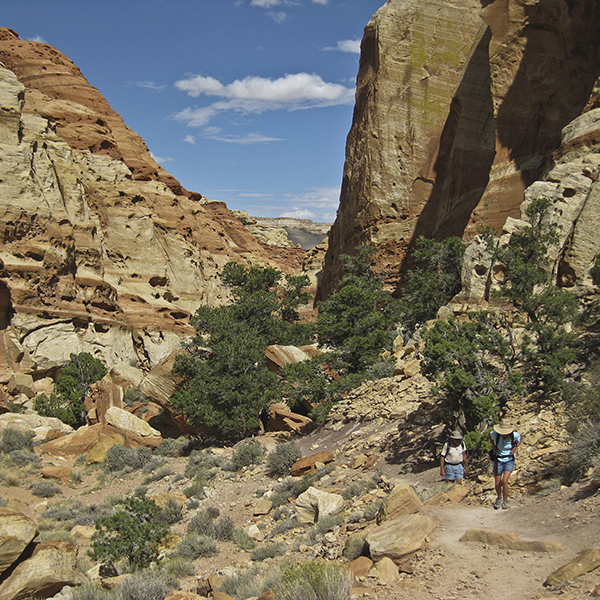
General Location Capitol Reef National Park
Distance 12.8 miles (20 km)
Difficulty Strenuous
Trailhead Elevation 5,500 ft (1,676 m)
Highest/Lowest Elevation 6,400/5,100 ft (1,950/1,554 m)
Fees No fee – Check the website listed below for current information.
Pets Not Allowed
More Info NPS website
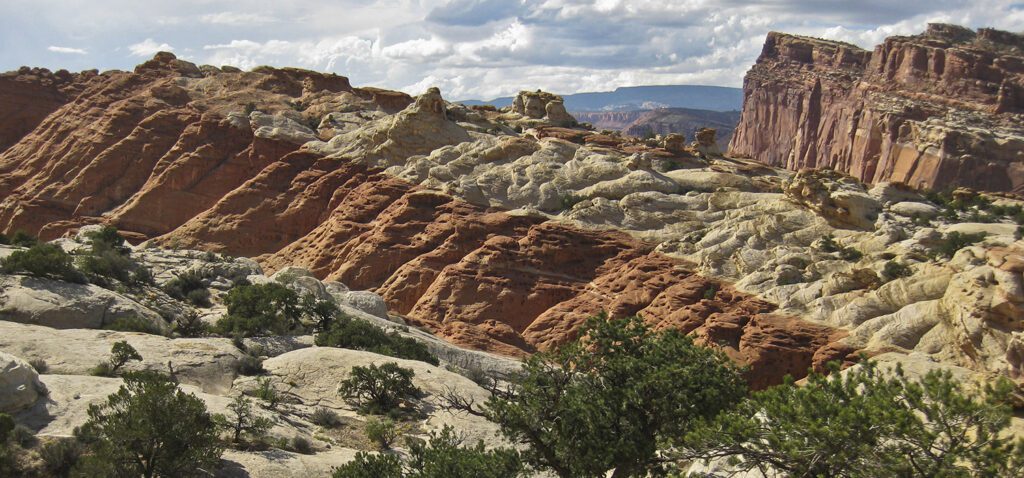
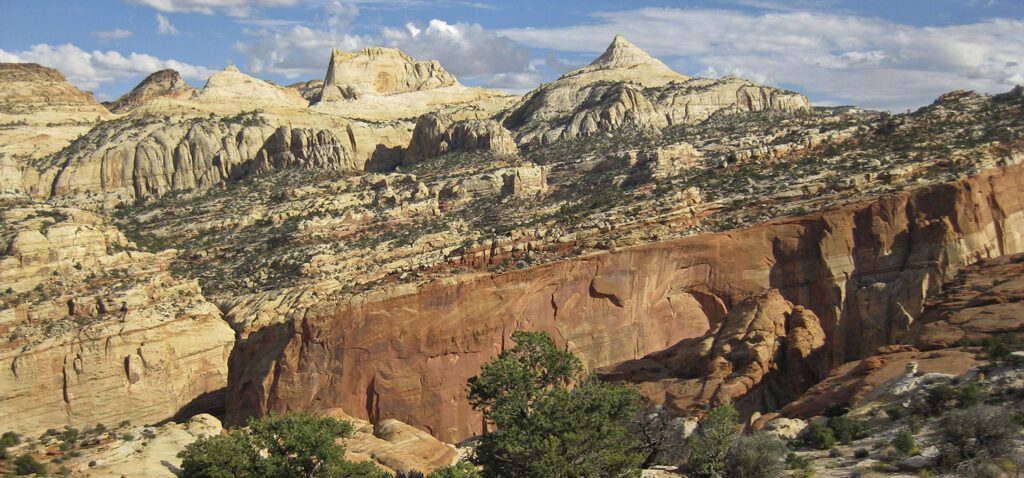
Adventure awaits
Sign up to get three hikes in your inbox every month for a year.
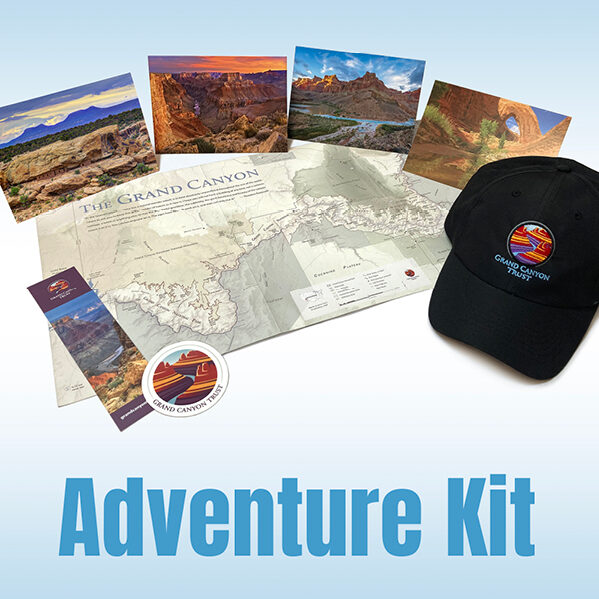
Special membership offer
Join the Grand Canyon Trust today to receive your adventure kit:
- $25 donation: a Grand Canyon map, The Advocate magazine subscription, bookmark, and sticker
- $75 donation: everything above plus four stunning note cards
- $100 donation: all the benefits of the $75 level, plus a Grand Canyon Trust hat
Related Hikes by Destination
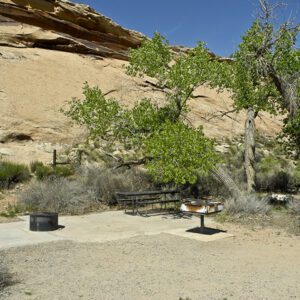
Sites: 25
Season: Open year-round
Reservations: For groups sites only
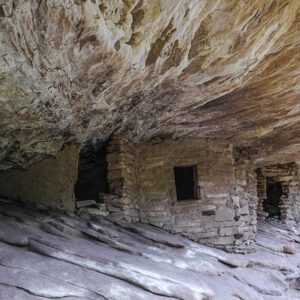
Distance: 8 mi (12.9 km)
Difficulty: Easy
Type: Out and back
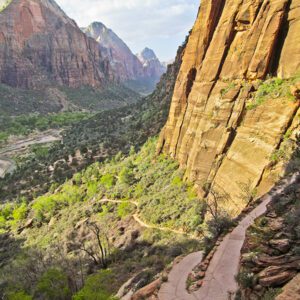
State: Utah
Nearest Town: Springdale, Utah
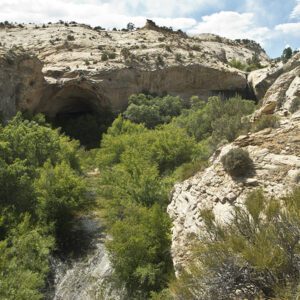
Distance: 2.2 mi (3.5 km)
Difficulty: Moderate
Type: Out and back
